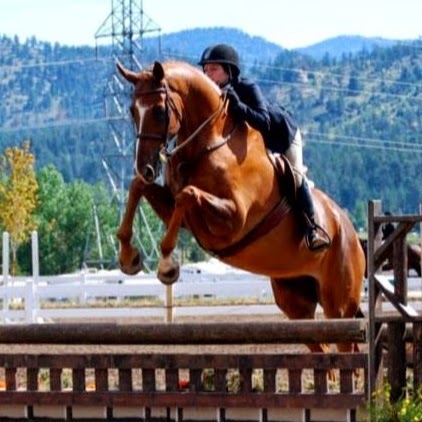Elizabeth J Peacock
age ~42
from Albuquerque, NM
- Also known as:
-
- Elizabeth K Peacock
Elizabeth Peacock Phones & Addresses
- Albuquerque, NM
- Thoreau, NM
- 1330 6Th St, Louisville, KY 40208 • (502)6343583
- 1456 4Th St, Louisville, KY 40208 • (502)6343583
Medicine Doctors

Elizabeth Ann Peacock
view sourceSpecialties:
Pathology
Anatomic Pathology & Clinical Pathology
Forensic Pathology
Anatomic Pathology & Clinical Pathology
Forensic Pathology
Education:
Texas Tech University(1987)
Resumes

Appraiser At V. I. Appraisal Service
view sourcePosition:
Appraiser at V. I. Appraisal Service
Location:
Virgin Islands (U.S.)
Industry:
Real Estate
Work:
V. I. Appraisal Service
Appraiser
Appraiser

Library Services Supervisor
view sourceLocation:
Albuquerque, NM
Industry:
Libraries
Work:
Albuquerque/Bernalillo County Library Apr 2014 - Jul 2015
Substitute Librarian
Satellite Coffee Sep 2009 - May 2014
Shift Lead and Head Cook and Barista
Albuquerque/Bernalillo County Library Oct 2013 - Apr 2014
Page
Louisville Science Center Sep 2007 - Jun 2009
Visitor Service Representative
Heuser Hearing Institute Mar 2008 - Jun 2008
Office Assistant
Substitute Librarian
Satellite Coffee Sep 2009 - May 2014
Shift Lead and Head Cook and Barista
Albuquerque/Bernalillo County Library Oct 2013 - Apr 2014
Page
Louisville Science Center Sep 2007 - Jun 2009
Visitor Service Representative
Heuser Hearing Institute Mar 2008 - Jun 2008
Office Assistant
Education:
The University of New Mexico 2001 - 2006
Bachelors, Bachelor of Arts, Audiology Thoreau High School 1997 - 2001
Bachelors, Bachelor of Arts, Audiology Thoreau High School 1997 - 2001
Skills:
Customer Service
Project Management
Microsoft Office
Team Leadership
Microsoft Excel
Team Building
Team Management
Strategic Planning
Powerpoint
Microsoft Word
Counterpoint
Aloha
Cooking
Specialty Coffee
Telephone Skills
Project Management
Microsoft Office
Team Leadership
Microsoft Excel
Team Building
Team Management
Strategic Planning
Powerpoint
Microsoft Word
Counterpoint
Aloha
Cooking
Specialty Coffee
Telephone Skills
Interests:
Japanese Language
Children
Mythologies
Environment
Baking
Education
Reading
Photography
Sign Language
Science and Technology
Libraries
Learning About Different Cultures
Animal Welfare
Arts and Culture
Health
Children
Mythologies
Environment
Baking
Education
Reading
Photography
Sign Language
Science and Technology
Libraries
Learning About Different Cultures
Animal Welfare
Arts and Culture
Health

Elizabeth Peacock
view source
Elizabeth Peacock
view source
Elizabeth Peacock
view sourceLocation:
United States

Elizabeth Peacock
view sourceLocation:
United States
Flickr

Mandy Elizabeth Peacock
view source
Elizabeth Peacock
view source
Elizabeth Paige Peacock
view source
Elizabeth Peacock
view source
Elizabeth Peacock
view source
Elizabeth Peacock
view source
Elizabeth Diane Peacock
view source
Elizabeth Peacock
view sourceClassmates

Elizabeth Mazza (Peacock)
view sourceSchools:
Rice Memorial High School South Burlington VT 1964-1968
Community:
Mary O'brien

Elizabeth Peacock (Hagen)
view sourceSchools:
Carson City Seventh Day Adventist School Carson City NV 1978-1979, Brockbank Junior High School Magna UT 1979-1980
Community:
Bonnie Hardman

Elizabeth Peacock
view sourceSchools:
Beitel Elementary School Laramie WY 1988-1990, Slade Elementary School Laramie WY 1990-1993, Velma Linford Elementary School Laramie WY 1993-1994, Indian Paintbrush Elementary School Laramie WY 1994-1995, Laramie Junior High School Laramie WY 1995-1998
Community:
Merridy Allen

Elizabeth Peacock
view sourceSchools:
South Montgomery High School New Market IN 2002-2006
Community:
Jayne Wright, Sheilah Gravens, Lisa Shake, Tresha Flaurr

Elizabeth Peacock
view sourceSchools:
Cardinal Stritch High School Oregon OH 1997-2001
Community:
Monica Heckel, Linda Lambert, Robert Wagner, Keith Crane

Elizabeth Elizabeth Stewa...
view sourceSchools:
Picture Butte High School Picture Butte Azores 1970-1975
Community:
Siona Doyle, Betty Schile

Elizabeth Peacock
view sourceSchools:
Thoreau Elementary School Thoreau NM 1988-1993
Community:
Penny Elkins, Brianne Brown

Elizabeth Peacock | Bullo...
view sourceYoutube
News

Polar Bears migrating north as ice melts, says researcher
view source- Sea ice is like a moving sidewalk and they travel with it, according to Elizabeth Peacock. As the ice melts, and the density of ice is found in different areas then more bears are likely to move. As more bears are likely to move, it creates a situation where more bears are led to leave. Polar be
- Date: Jan 09, 2015
- Category: Sci/Tech
- Source: Google

The Great Polar Bear Migration
view source- traverse the long stretches of ocean between hunting and mating grounds.Study leader Elizabeth Peacock explains Instead of sort of random movements of bears across the Arctic that we found in sort of the more ancient historical picture, we found directional movement towards the Canadian Archipelago.
- Date: Jan 08, 2015
- Category: Sci/Tech
- Source: Google

Polar bears heading to Arctic islands for more food, new research suggests
view source- paper, published Jan. 6 in the online journal Plos One, whose authors include former Government of Nunavut polar bear biologist Elizabeth Peacock, provides genetic evidence that also points to movement by polar bears to the Arctic islands, where the polar bears can find better seal-hunting conditions.
- Date: Jan 08, 2015
- Category: Sci/Tech
- Source: Google

Polar Bears Stand Up to Climate Change
view source- "In general, polar bears move with their habitat," Elizabeth Peacock, a US Geological Survey (USGS) researcher, explained to Discovery News. "Sea ice is like a moving sidewalk and they travel with it," she continued. "Bears likely move towards places with better access to prey and mates."
- Date: Jan 08, 2015
- Category: Sci/Tech
- Source: Google

Are Polar Bears Saving Themselves?
view source- Individual animals are not marching northward en masse, according to Elizabeth Peacock, a U.S. Geological Society researcher who recently studied polar bears. Rather, the population distribution shifts appear to be gradual and subtle.
- Date: Jan 08, 2015
- Category: Sci/Tech
- Source: Google
Googleplus

Elizabeth Peacock
Work:
UCSD Anthropology (2011)
SWCCD Behavioral Sciences (2011)
SWCCD Behavioral Sciences (2011)
Education:
University of California, San Diego - Ph.D., anthropology, University of California, San Diego - M.A., anthropolopgy, University of Kansas - B.A., anthropology, political science
Tagline:
Socioculturalinguistic anthropologist

Elizabeth Peacock
About:
I am not the Elizabeth Peacock from the popular game and movie Clue.

Elizabeth Peacock

Elizabeth Peacock

Elizabeth Peacock

Elizabeth Peacock

Elizabeth Peacock (Liz)

Elizabeth Peacock
Myspace
Get Report for Elizabeth J Peacock from Albuquerque, NM, age ~42

















